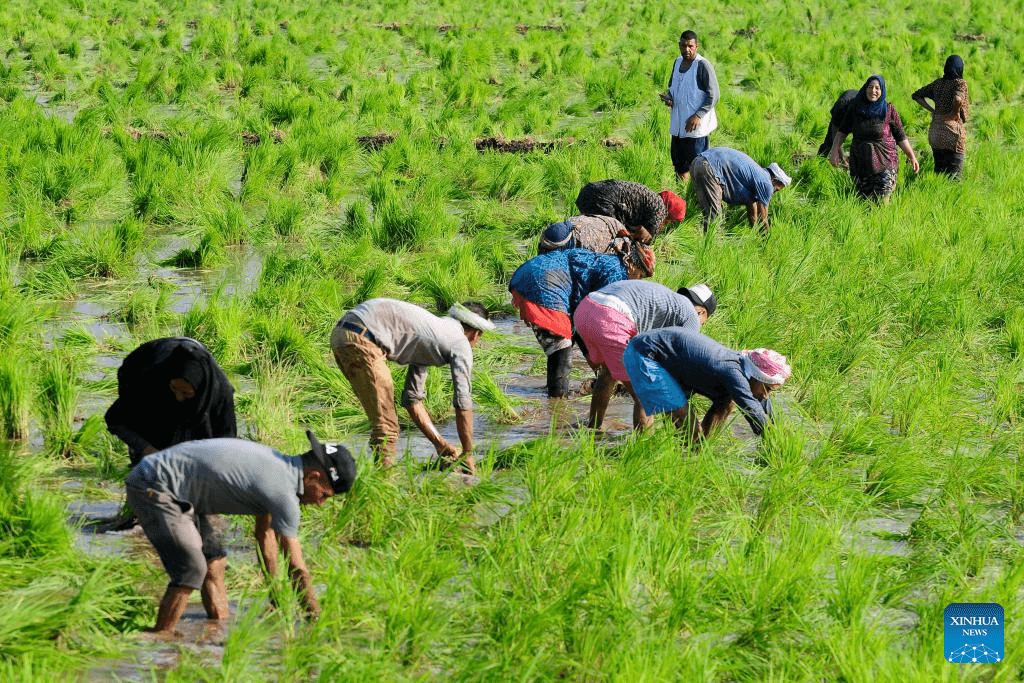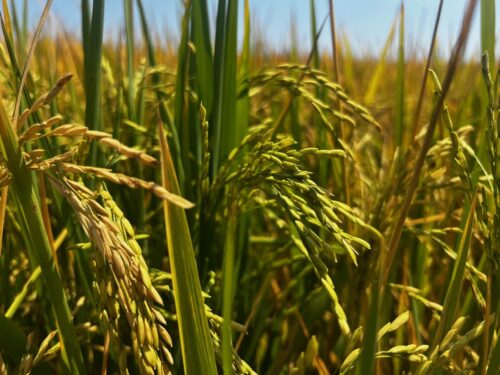Tags
Kashmir farmers profit from the revival of Mushk Budij, aromatic rice cultivation

Mushk Budij, Kashmir’s indigenous traditional and short, bold, scented-rice variety which was revived after decades is bearing big profits for the farmers of the Kashmir Valley. An aromatic rice variety native to Kashmir and popular in Kashmir during the 1960s is again growing in the Valley, with its demand picking up in domestic and foreign markets. Being a staple food, rice is a primary source of calories in peoples’ diet, compared to wheat and maize, in Kashmir. Owing to its high price, the consumption of aromatic rice varieties like Mushk Budij in the region is limited to special occasions alone. Even during the G20 summit in Kashmir last week, Jammu and Kashmir Lieutenant Governor Manoj Sinha congratulated the farmers for reviving Mushk Budij, the heritage crop. “The efforts of Mushk Budij in Kashmir’s Sagam village will provide a new fillip to the farming of one of the most cherished and valued products of J&K,” said the LG on his monthly ‘Awaam Ki Awaaz’ Radio programme. Both young and old farmers in Kashmir have started growing the costly rice in their fields after getting high returns on their produce from the market. For example, one quintal of common milled rice is sold at Rs 3,000 in Kashmir while one quintal of Mushk Budij is sold at Rs 20,000. According to the officials of agriculture department in the year 2006, one quintal of Mushk Budij would cost Rs 6,000 compared to Rs 20,000 in 2023. “The rates of Mushk Budij is at an all-time high, due to which more and more growers are inclined to cultivate this crop, however the crop can not be produced everywhere in the Valley.” A farmer Abdul Rashid Dar of Sagam tells Moneycontrol: “After 1984, we stopped growing Mushk Budij in our land because the blast disease did not yield any crop. But in 2014, we again started growing it and the returns are pretty good. Compared to common rice varieties, its returns are far higher.” Dar who owns four kanals of land claims that the market of Mushk Budij is poor due to which the farmers are not able to sell their produce immediately after harvest season. “We definitely get good prices for our produce but the problem is that we do not find many consumers. Not many people are interested in buying aromatic rice since the prices are seven times higher than common varieties of rice,” he says. Over a thousand farmers in Sagam village, a small hamlet in south Kashmir’s Kokernag locality in Anantnag district, 79 km from Srinagar, grow the rare crop in their fields. Almost all of Kashmir’s Mushk Budji, a japonica aromatic local land race, grows in Sagam, Tengpawa and adjoining areas with an estimated area of above 5,000 kanals annually producing around 6,000 quintals of the aromatic rice. Kokernag belt, say most farmers, is considered the ideal location for the cultivation of Mushk Budij with the climate, land, altitude and spring water being feasible for the aromatic crop variety to grow. “Growing the aromatic crop is risky due to two main reasons. First, it is blast-prone and, second, the milled rice of Mushk Budij cannot be stored for a long time because it loses its aroma,” says 28-year-old farmer Javaid Ahmad Khanday of Tengpawa village. A young farmer Tajamul Bashir asked the government to procure the entire produce from the farmers so that they will get timely returns and benefits. “The prices of Mushk Budij is very good compared to other varieties but government should thrust upon marketing so that the crop will be sold in one go,” says 23-year-old Bashir who owns six kanals of Mushk Budij land in Tengpawa village. Marketing has remained a barrier in successful production of the crop because the custodian farmers suspect they are being exploited by middlemen or brokers. However, Chowdhary Muhammad Iqbal, director Agriculture Kashmir, tells Moneycontrol that there is a growing demand for Mushk Budij in the international market. “We have sent a number of samples to the UAE and very soon the aromatic crop will be shipped to other countries. The specialty rice will also get the GI tagging, an indication which identifies a product as originating in that territory, where a given quality, reputation or characteristic of the product is essentially attributable to its geographic origin,” he says. In the year 2020, around 244 hectares of land was under cultivation of Mushk Budij, and increased to 248 hectares in 2021 and 280 hectares in 2022. For next five years, the proposed plan for expansion of Mushk Budij rice in Kashmir is on 999 hectares of land. Similarly, Mushk Budij rice production in Kashmir in 2020-21 was 6,000 quintals, compared to 5,400 quintals in 2021-22 and 6,090 quintals during the year 2022-23. Ajaz Hussain Dar, chief Agriculture officer Anantnag, blames the blast disease for the fall in production of Mushk Budij during the year 2021-22. “Though farmers use fungicide to keep the crop away from blast disease but sometimes the disease ruthlessly attacks the crop,” he says. Regarding the low demand of the crop, Dar says, a quality and proper packaging of the crop is required so that more and more consumers can buy it without any hassles. The special rice variety vanished from the agriculture fields during the 1960s when uncontrolled blast disease hit the crop. It took scientists at the Sher-e-Kashmir University of Agricultural Sciences and Technology (SKUAST Kashmir) around more than four decades to resurrect the ailing crop from its death bed. In the year 2007-08, SKUAST’s Mountain Research Centre for Field Crops, Khudwani in south Kashmir started the Mushk Budij revival programme with an objective to conserve local biodiversity through utilisation for socio-economic development of rice growers. Senior SKUAST scientist Dr Amjad M Husaini tells Moneycontrol that a decade ago, he along with a team of scientists had conducted the genetic purification of Mushk Budij at SKUAST Khudwani campus. “Between 2008 and 2012, we started a revival and purification programme at SKUAST to check the authenticity of Mushk Budij. Through a participatory mode we checked the produce of each farmer so as to test the aroma in the crop. The programme was conducted with a purpose to find quality rice in Kashmir because rare aromatic varieties were giving better returns. In 2013, the purification was done and the government finally launched the tested Mushk Budij in 2014,” says Husaini, an associate professor at the division of plant biotechnology, SKUAST Kashmir. Three years later, in 2017, Sagam produced 6,029 quintals of the Mushk Budij and due to which the then agriculture minister Ghulam Nabi Hanjura had declared Sagam as a model village for Mushk Budij. When asked why the production of Mushk Budij has not enhanced during the past five years, Dar replied that due to extreme weather events the production has not enhanced and rather declined. “The climate change has hit every crop including Mushk Budij. Due to untimely rains and intense heat, the crop production has gone down by 20-40 per cent.” Husaini says that due to frequent crop failures, a well-researched programme was undertaken by scientists to incorporate blast resistance genes viz Pi54, Pi1 and Pita into the genetic background of Mushk Budij. “Within the next two-three years, a new Mushk Budij variety will be introduced which will not just be aromatic but will also be blast-resistant so that more and more land is brought under its cultivation. The farmers in Kashmir can easily grow the new variety to get higher returns.”
https://www.moneycontrol.com/europe/?url=https://www.moneycontrol.com/news/economy/agriculture/kashmir-farmers-profit-from-the-revival-of-mushk-budij-aromatic-rice-cultivation-10776821.htmlPublished Date: June 11, 2023






